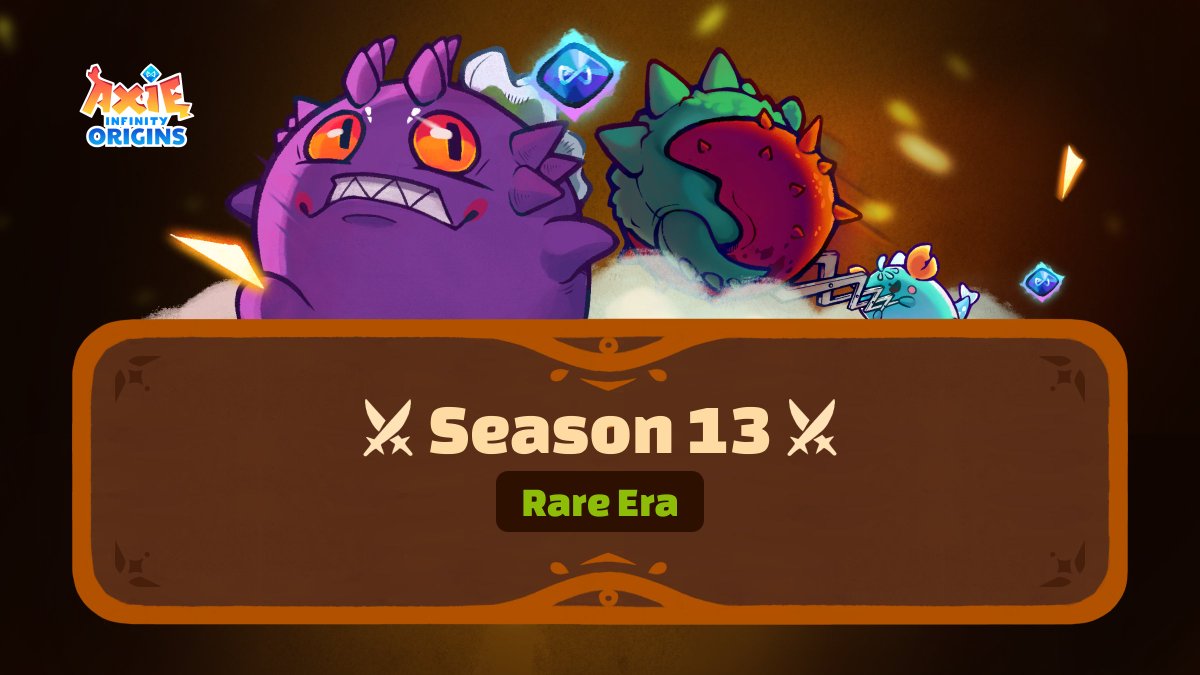
AXS
Axie Infinity Kurs
$3,3600
+$0,20000
(+6,32 %)
Preisänderung der letzten 24 Stunden

Was denken Sie heute über den AXS-Kurs?
Teilen Sie uns Ihre Meinung mit: Daumen nach oben, wenn Sie BTC und seinen Wert positiv sehen, oder Daumen nach unten, wenn Sie ihn negativ einschätzen.
Abstimmen und Ergebnisse anzeigen
Haftungsausschluss
Der soziale Inhalt auf dieser Seite („Inhalt”), einschließlich, aber nicht beschränkt auf Tweets und Statistiken, die von LunarCrush bereitgestellt werden, stammt von Dritten und wird „wie er ist” ausschließlich zu Informationszwecken bereitgestellt. OKX übernimmt keine Garantie für die Qualität oder Richtigkeit des Inhalts, und der Inhalt spiegelt nicht die Ansichten von OKX wider. Die Inhalte dienen nicht dazu, (i) Anlageberatung oder Empfehlungen zu geben, (ii) ein Angebot oder eine Aufforderung zum Kauf, Verkauf oder Halten digitaler Vermögenswerte darzustellen oder (iii) finanzielle, buchhalterische, rechtliche oder steuerliche Beratung zu leisten. Digitale Assets, einschließlich Stablecoins und NFTs, bergen ein hohes Risiko, können stark schwanken und sogar wertlos werden. Preis und Leistung digitaler Vermögenswerte sind nicht garantiert und können sich ohne Vorankündigung ändern.<br></br>OKX gibt keine Anlage- oder Vermögensempfehlungen. Du solltest gut abwägen, ob der Handel und das Halten von digitalen Assets angesichts deiner finanziellen Situation sinnvoll ist. Bei Fragen zu deiner individuellen Situation wende dich bitte an deinen Rechts-/Steuer- oder Anlagenexperten. Weitere Einzelheiten findest du in unseren <a href="/help/terms-of-service">Nutzungsbedingungen</a> und der <a href="/help/risk-compliance-disclosure">Risikowarnung</a>. Durch die Nutzung der Website eines Drittanbieters („TPW“) akzeptieren Sie, dass jegliche Nutzung der TPW den Bedingungen der TPW unterliegt. Sofern nicht ausdrücklich schriftlich angegeben, steht OKX einschließlich seiner verbundenen Unternehmen („OKX“) in keinerlei Verbindung zum Eigentümer oder Betreiber der TPW. Sie stimmen zu, dass OKX nicht für Verluste, Schäden oder sonstige Folgen haftet, die sich aus Ihrer Nutzung der TPW ergeben. Bitte beachte, dass die Nutzung einer TPW zu einem Verlust oder einer Minderung deiner Assets führen kann. Das Produkt ist möglicherweise nicht in allen Ländern verfügbar.
Marktinformationen zu Axie Infinity
Marktkapitalisierung
Die Marktkapitalisierung wird durch Multiplikation der Umlaufmenge des Coins mit dem letzten Preis berechnet.
Marktkapitalisierung = Umlaufmenge × letzter Preis
Marktkapitalisierung = Umlaufmenge × letzter Preis
Umlaufmenge
Gesamtmenge eines Coins, die auf dem Markt öffentlich verfügbar ist.
Ranking der Marktkapitalisierung
Platzierung des Coins in Bezug auf die Marktkapitalisierung.
Allzeithoch
Höchster Preis, den ein Coin in seiner Handelsgeschichte erreicht hat.
Allzeittief
Niedrigster Preis, den ein Coin in seiner Handelshistorie erreicht hat.
Marktkapitalisierung
$545,63M
Umlaufmenge
161.381.881 AXS
59,77 % von
270.000.000 AXS
Ranking der Marktkapitalisierung
42
Prüfungen

Letzte Prüfung: 21. Juni 2022
24-Std.-Hoch
$3,7200
24-Std.-Tief
$3,1300
Allzeithoch
$165,83
-97,98 % (-$162,47)
Letzte Aktualisierung: 7. Nov. 2021
Allzeittief
$2,1040
+59,69 % (+$1,2560)
Letzte Aktualisierung: 17. Apr. 2025
Axie Infinity-Feed
Der folgende Inhalt stammt von .

Jihoz.ron 🍚 reposted

Axie Infinity
So meistern Sie den riskanten Mech in Axie Classic
Hohes Risiko, hoher Schaden 💥
Die 9. Saison des klassischen Wettbewerbs ist im Gange – und es gibt über 35.000 $ AXS zu gewinnen.
Möchten Sie einige dieser Belohnungen mit nach Hause nehmen?
Riskante Mechs können helfen 🧵👇
Original anzeigen
3.604
14

Aur.ron✨
Ich bin Miteigentümer einer Krypto-Gaming-Blockchain. Sie können Krypto machen, indem Sie Videospiele spielen. Viele Menschen haben daraus Karriere gemacht. Erlauben Sie mir, Ihnen Axie Infinity zu zeigen. Lesen Sie diesen Artikel über den Erfolg von Ronin.
Hier, nimm diese Karte. Wenn Sie Hilfe bei der Mitarbeit benötigen, rufen Sie mich an.
Original anzeigen1.184
0



Axie Infinity
Origins S13 ist LIVE!
Lasst die Schlachten beginnen ⚔️
🏆 90K AXS in Belohnungen zu gewinnen
🎟️ Meta Morph Tickets im Check-in-Shop erhältlich
💎 Preisnachlässe für Schrottläden
⚒️ Balancing-Updates
🎁 Der Spießrutenlauf-Modus und die Sammeltruhen sind ZURÜCK
Ursprünge 👇 abspielen
🔗 :
Vollständige Ankündigung 👇
📜 :
Original anzeigen
8.399
97

ChainCatcher 链捕手
Laut den Daten von SoSoValue läutete der Kryptomarkt nach einem zweitägigen Rückgang eine allgemeine Rallye ein, mit einem 24-Stunden-Anstieg von etwa 2 % bis 9 %. Unter ihnen führte Ethereum (ETH) die Rallye mit 8,64% an und durchbrach kurzzeitig die Marke von 2.700 $. Bitcoin (BTC) stieg um 1,31% und blieb in der Nähe von 103.000 $. Bemerkenswert ist, dass MAG7.ssi um 4,01 %, DEFI.ssi um 8,15 % und MEME.ssi um 7,49 % gestiegen sind.
Zu den weiteren Sektoren, die sich gut entwickelten, gehörten: Der GameFi-Sektor stieg 24 Stunden, darunter The Sandbox (SAND), Echelon Prime (PRIME), Decentraland (MANA) und Axie Infinity (AXS) stiegen um 10,10 %, 11,49 %, 13,03 % bzw. 20,15 %. Der DePIN-Sektor stieg um 7,00 %, und innerhalb des Sektors stiegen Arweave (AR) und Grass (GRASS) um 12,23 % bzw. 25,51 %.
Darüber hinaus stieg der Layer2-Sektor um 6,84 %, Optimism (OP) und Starknet (STRK) um 14,10 % bzw. 14,83 %; Der DeFi-Sektor stieg um 6,73 % und Ethena (ENA) legte um 21,29 % zu; Der Meme-Sektor stieg um 6,63 % und Pepe (PEPE) um 8,96 %; Der Layer1-Sektor stieg um 4,35%, wobei Solana (SOL) und Avalanche (AVAX) um 6,84% bzw. 8,38% zulegten; Der PayFi-Sektor stieg um 3,69%, der CeFi-Sektor stieg um 1,94% und Hyperliquid (HYPE) legte um 8,08% zu.
Der Krypto-Sektor-Index, der den historischen Markt des Sektors widerspiegelt, zeigt, dass ssiGameFi, ssiDePIN und ssiLayer2 innerhalb von 24 Stunden um 10,30 %, 7,74 % bzw. 7,03 % gestiegen sind, mit wöchentlichen Renditen von 40,36 %, 25,40 % bzw. 29,98 %.
Original anzeigen91.046
0
AXS-Rechner


Axie Infinity Preisentwicklung in USD
Der aktuelle Preis von Axie Infinity liegt bei $3,3600. In den letzten 24 Stunden ist Axie Infinity um +6,33 % gestiegen. Der Coin hat derzeit eine Umlaufmenge von 161.381.881 AXS und eine maximale Versorgung von 270.000.000 AXS, was eine vollständig verwässerte Marktkapitalisierung von $545,63M ergibt. In der Rangliste der Marktkapitalisierung belegt der Axie Infinity-Coin derzeit die Position 42. Der Axie Infinity/USD-Kurs wird in Echtzeit aktualisiert.
Heute
+$0,20000
+6,32 %
7 Tage
+$1,0130
+43,16 %
30 Tage
+$1,0630
+46,27 %
3 Monate
-$1,0200
-23,29 %
Beliebte Axie Infinity-Konvertierungen
Letzte Aktualisierung: 14.05.2025, 22:07
| 1 AXS in USD | 3,3810 $ |
| 1 AXS in EUR | 3,0142 € |
| 1 AXS in PHP | 188,89 ₱ |
| 1 AXS in IDR | 55.958,29 Rp |
| 1 AXS in GBP | 2,5391 £ |
| 1 AXS in CAD | 4,7194 $ |
| 1 AXS in AED | 12,4186 AED |
| 1 AXS in VND | 87.704,28 ₫ |
Über Axie Infinity (AXS)
Die angegebene Bewertung ist eine aggregierte Bewertung, die von OKX aus den angegebenen Quellen gesammelt wurde und nur zu Informationszwecken dient. OKX übernimmt keine Garantie für die Qualität oder Richtigkeit der Bewertungen. Es ist nicht beabsichtigt, (i) eine Anlageberatung oder -empfehlung, (ii) ein Angebot oder eine Aufforderung zum Kauf, Verkauf oder Halten von digitalen Vermögenswerten oder (iii) eine Finanz-, Buchhaltungs-, Rechts- oder Steuerberatung anzubieten. Digitale Vermögenswerte, einschließlich Stablecoins und NFTs, sind mit einem hohen Risiko behaftet, ihr Wert kann stark schwanken und sie können sogar wertlos werden. Der Preis und die Wertentwicklung der digitalen Vermögenswerte sind nicht garantiert und können sich ohne vorherige Ankündigung ändern. Ihre digitalen Vermögenswerte sind nicht durch eine Versicherung gegen mögliche Verluste abgedeckt. Historische Renditen sind kein Indikator für zukünftige Renditen. OKX garantiert keine Rendite, Rückzahlung von Kapital oder Zinsen. OKX gibt keine Anlage- oder Vermögensempfehlungen ab. Sie sollten sorgfältig abwägen, ob der Handel mit oder das Halten von digitalen Vermögenswerten angesichts Ihrer finanziellen Situation für Sie geeignet ist. Bitte konsultieren Sie Ihren Rechts-/Steuer-/Anlageexperten, wenn Sie Fragen bezüglich Ihrer individuellen Gegebenheiten haben.
Mehr anzeigen
- Offizielle Website
- Whitepaper
- Block Explorer
Über Websites von Drittanbietern
Über Websites von Drittanbietern
Durch die Nutzung der Website eines Drittanbieters (Third-Party Website, „TPW“) akzeptieren Sie, dass jegliche Nutzung der TPW den Bedingungen der TPW unterliegt und durch diese geregelt wird. Sofern nicht ausdrücklich schriftlich anders angegeben, stehen OKX und seine verbundenen Unternehmen („OKX“) in keiner Weise mit dem Eigentümer oder Betreiber der TPW in Verbindung. Sie erklären sich damit einverstanden, dass OKX nicht für Verluste, Schäden und sonstige Folgen haftet, die sich aus Ihrer Nutzung der TPW ergeben. Bitte beachten Sie, dass die Nutzung einer TPW zu einem Verlust oder einer Minderung Ihres Vermögens führen kann.
Häufig gestellte Fragen zum Axie Infinity-Preis
Hängt der AXS-Preis mit SLP zusammen?
Nein, dies sind zwei unterschiedliche Token, die innerhalb des Ökosystems von Axie Infinity einmaligen Zwecken dienen und keinen festen Wechselkurs haben.
Wodurch wird der AXS-Preis festgelegt?
Der Preis der AXS-Token ist von vielen Faktoren abhängig, einschließlich Verwendung und Wachstum der Plattform von Axie Infinity sowie Zustand des Kryptomarkts.
Wo kann ich AXS kaufen?
AXS kann für eine Vielzahl von Dingen verwendet werden, einschließlich Staking. Benutzer(innen) können ihre Token auf der Plattform von Axie Infinity staken, um das Recht zu erhalten, über Vorschläge abzustimmen und Staking-Prämien zu verdienen. Benutzer(innen) können sie auch auf dem Marktplatz von Axie Infinity einsetzen, um Vermögenswerte im Spiel zu kaufen, wie z. B. Axies und Landparzellen.
Wie viel ist 1 Axie Infinity heute wert?
Aktuell ist ein Axie Infinity $3,3600 wert. Wenn Sie Antworten und Einblicke in das Preisgeschehen von Axie Infinity suchen, sind Sie hier genau an der richtigen Stelle. Entdecken Sie die neuesten Axie Infinity-Charts und handeln Sie verantwortungsbewusst mit OKX.
Was ist eine Kryptowährung?
Kryptowährungen, wie etwa Axie Infinity, sind digitale Vermögenswerte, die auf einem öffentlichen Hauptbuch namens Blockchains betrieben werden. Erfahren Sie mehr über die auf OKX angebotenen Coins und Tokens sowie deren unterschiedlichen Eigenschaften, einschließlich Live-Preisen und Charts in Echtzeit.
Wann wurden Kryptowährungen erfunden?
Dank der Finanzkrise von 2008 ist das Interesse an einem dezentralen Finanzwesen rasant gestiegen. Bitcoin bot als sicherer digitaler Vermögenswert auf einem dezentralen Netzwerk eine neuartige Lösung. Seitdem wurden auch viele andere Token, wie etwa Axie Infinity, erstellt.
Wird der Preis von Axie Infinity heute steigen?
Auf unserer Axie Infinity-Seite für Preisprognosen finden Sie Prognosen zukünftiger Preise und können Ihre Preisziele bestimmen.
ESG-Offenlegung
ESG-Regulierungen (Umwelt, Soziales und Governance) für Krypto-Vermögenswerte zielen darauf ab, ihre Umweltauswirkungen (z. B. energieintensives Mining) zu adressieren, Transparenz zu fördern und ethische Governance-Praktiken zu gewährleisten, um die Krypto-Industrie mit breiteren Nachhaltigkeits- und gesellschaftlichen Zielen in Einklang zu bringen. Diese Vorschriften fördern die Compliance mit Standards, die Risiken mindern und das Vertrauen in digitale Vermögenswerte stärken.
Details zum Vermögenswert
Name
OKcoin Europe LTD
Kennung der relevanten juristischen Person
54930069NLWEIGLHXU42
Name des Krypto-Vermögenswerts
Axie Infinity Shard
Konsensmechanismus
Axie Infinity Shard is present on the following networks: binance_smart_chain, ethereum, harmony_one, ronin, solana.
Binance Smart Chain (BSC) uses a hybrid consensus mechanism called Proof of Staked Authority (PoSA), which combines elements of Delegated Proof of Stake (DPoS) and Proof of Authority (PoA). This method ensures fast block times and low fees while maintaining a level of decentralization and security. Core Components 1. Validators (so-called “Cabinet Members”): Validators on BSC are responsible for producing new blocks, validating transactions, and maintaining the network’s security. To become a validator, an entity must stake a significant amount of BNB (Binance Coin). Validators are selected through staking and voting by token holders. There are 21 active validators at any given time, rotating to ensure decentralization and security. 2. Delegators: Token holders who do not wish to run validator nodes can delegate their BNB tokens to validators. This delegation helps validators increase their stake and improves their chances of being selected to produce blocks. Delegators earn a share of the rewards that validators receive, incentivizing broad participation in network security. 3. Candidates: Candidates are nodes that have staked the required amount of BNB and are in the pool waiting to become validators. They are essentially potential validators who are not currently active but can be elected to the validator set through community voting. Candidates play a crucial role in ensuring there is always a sufficient pool of nodes ready to take on validation tasks, thus maintaining network resilience and decentralization. Consensus Process 4. Validator Selection: Validators are chosen based on the amount of BNB staked and votes received from delegators. The more BNB staked and votes received, the higher the chance of being selected to validate transactions and produce new blocks. The selection process involves both the current validators and the pool of candidates, ensuring a dynamic and secure rotation of nodes. 5. Block Production: The selected validators take turns producing blocks in a PoA-like manner, ensuring that blocks are generated quickly and efficiently. Validators validate transactions, add them to new blocks, and broadcast these blocks to the network. 6. Transaction Finality: BSC achieves fast block times of around 3 seconds and quick transaction finality. This is achieved through the efficient PoSA mechanism that allows validators to rapidly reach consensus. Security and Economic Incentives 7. Staking: Validators are required to stake a substantial amount of BNB, which acts as collateral to ensure their honest behavior. This staked amount can be slashed if validators act maliciously. Staking incentivizes validators to act in the network's best interest to avoid losing their staked BNB. 8. Delegation and Rewards: Delegators earn rewards proportional to their stake in validators. This incentivizes them to choose reliable validators and participate in the network’s security. Validators and delegators share transaction fees as rewards, which provides continuous economic incentives to maintain network security and performance. 9. Transaction Fees: BSC employs low transaction fees, paid in BNB, making it cost-effective for users. These fees are collected by validators as part of their rewards, further incentivizing them to validate transactions accurately and efficiently.
The Ethereum network uses a Proof-of-Stake Consensus Mechanism to validate new transactions on the blockchain. Core Components 1. Validators: Validators are responsible for proposing and validating new blocks. To become a validator, a user must deposit (stake) 32 ETH into a smart contract. This stake acts as collateral and can be slashed if the validator behaves dishonestly. 2. Beacon Chain: The Beacon Chain is the backbone of Ethereum 2.0. It coordinates the network of validators and manages the consensus protocol. It is responsible for creating new blocks, organizing validators into committees, and implementing the finality of blocks. Consensus Process 1. Block Proposal: Validators are chosen randomly to propose new blocks. This selection is based on a weighted random function (WRF), where the weight is determined by the amount of ETH staked. 2. Attestation: Validators not proposing a block participate in attestation. They attest to the validity of the proposed block by voting for it. Attestations are then aggregated to form a single proof of the block’s validity. 3. Committees: Validators are organized into committees to streamline the validation process. Each committee is responsible for validating blocks within a specific shard or the Beacon Chain itself. This ensures decentralization and security, as a smaller group of validators can quickly reach consensus. 4. Finality: Ethereum 2.0 uses a mechanism called Casper FFG (Friendly Finality Gadget) to achieve finality. Finality means that a block and its transactions are considered irreversible and confirmed. Validators vote on the finality of blocks, and once a supermajority is reached, the block is finalized. 5. Incentives and Penalties: Validators earn rewards for participating in the network, including proposing blocks and attesting to their validity. Conversely, validators can be penalized (slashed) for malicious behavior, such as double-signing or being offline for extended periods. This ensures honest participation and network security.
Harmony operates on a consensus mechanism called Effective Proof of Stake (EPoS), designed to balance validator influence and enhance network security while improving transaction scalability. Core Components: 1. Effective Proof of Stake (EPoS): Validator Diversity: EPoS allows a large number of validators to participate and limits the influence of high-stake validators, promoting decentralization and preventing stake centralization. Staking Across Shards: Multiple validators compete within each shard, distributing staking power more broadly and enhancing network security. 2. Sharding with PBFT Finality: Parallel Transaction Processing: Harmony’s four shards enable independent processing of transactions and smart contracts, enhancing scalability and throughput. Fast Finality with PBFT: Each shard uses a modified Practical Byzantine Fault Tolerance (PBFT) model, ensuring immediate finality once blocks are validated and achieving high transaction speeds.
Ronin utilizes a Delegated Proof of Stake (DPoS) consensus mechanism, where community-elected validators are responsible for securing the network and validating transactions. Core Components of Ronin’s Consensus: 1. Delegated Proof of Stake (DPoS): Community Voting for Validator Selection: RON token holders delegate their tokens to vote for validators, who are then selected to produce blocks, validate transactions, and maintain network security. Validators with the most votes are chosen to participate in consensus. Periodic Validator Rotation: Validators are regularly rotated based on community votes, enhancing decentralization and preventing long-term control by any single validator group. This rotation supports both security and fairness. 2. Incentive-Driven Voting System: Alignment with Community Interests: The voting system ensures that validators remain aligned with community goals. Validators that fail to perform adequately or act against network interests may lose votes and be replaced by more trusted participants.
Solana uses a unique combination of Proof of History (PoH) and Proof of Stake (PoS) to achieve high throughput, low latency, and robust security. Here’s a detailed explanation of how these mechanisms work: Core Concepts 1. Proof of History (PoH): Time-Stamped Transactions: PoH is a cryptographic technique that timestamps transactions, creating a historical record that proves that an event has occurred at a specific moment in time. Verifiable Delay Function: PoH uses a Verifiable Delay Function (VDF) to generate a unique hash that includes the transaction and the time it was processed. This sequence of hashes provides a verifiable order of events, enabling the network to efficiently agree on the sequence of transactions. 2. Proof of Stake (PoS): Validator Selection: Validators are chosen to produce new blocks based on the number of SOL tokens they have staked. The more tokens staked, the higher the chance of being selected to validate transactions and produce new blocks. Delegation: Token holders can delegate their SOL tokens to validators, earning rewards proportional to their stake while enhancing the network's security. Consensus Process 1. Transaction Validation: Transactions are broadcast to the network and collected by validators. Each transaction is validated to ensure it meets the network’s criteria, such as having correct signatures and sufficient funds. 2. PoH Sequence Generation: A validator generates a sequence of hashes using PoH, each containing a timestamp and the previous hash. This process creates a historical record of transactions, establishing a cryptographic clock for the network. 3. Block Production: The network uses PoS to select a leader validator based on their stake. The leader is responsible for bundling the validated transactions into a block. The leader validator uses the PoH sequence to order transactions within the block, ensuring that all transactions are processed in the correct order. 4. Consensus and Finalization: Other validators verify the block produced by the leader validator. They check the correctness of the PoH sequence and validate the transactions within the block. Once the block is verified, it is added to the blockchain. Validators sign off on the block, and it is considered finalized. Security and Economic Incentives 1. Incentives for Validators: Block Rewards: Validators earn rewards for producing and validating blocks. These rewards are distributed in SOL tokens and are proportional to the validator’s stake and performance. Transaction Fees: Validators also earn transaction fees from the transactions included in the blocks they produce. These fees provide an additional incentive for validators to process transactions efficiently. 2. Security: Staking: Validators must stake SOL tokens to participate in the consensus process. This staking acts as collateral, incentivizing validators to act honestly. If a validator behaves maliciously or fails to perform, they risk losing their staked tokens. Delegated Staking: Token holders can delegate their SOL tokens to validators, enhancing network security and decentralization. Delegators share in the rewards and are incentivized to choose reliable validators. 3. Economic Penalties: Slashing: Validators can be penalized for malicious behavior, such as double-signing or producing invalid blocks. This penalty, known as slashing, results in the loss of a portion of the staked tokens, discouraging dishonest actions.
Anreizmechanismen und anfallende Gebühren
Axie Infinity Shard is present on the following networks: binance_smart_chain, ethereum, harmony_one, ronin, solana.
Binance Smart Chain (BSC) uses the Proof of Staked Authority (PoSA) consensus mechanism to ensure network security and incentivize participation from validators and delegators. Incentive Mechanisms 1. Validators: Staking Rewards: Validators must stake a significant amount of BNB to participate in the consensus process. They earn rewards in the form of transaction fees and block rewards. Selection Process: Validators are selected based on the amount of BNB staked and the votes received from delegators. The more BNB staked and votes received, the higher the chances of being selected to validate transactions and produce new blocks. 2. Delegators: Delegated Staking: Token holders can delegate their BNB to validators. This delegation increases the validator's total stake and improves their chances of being selected to produce blocks. Shared Rewards: Delegators earn a portion of the rewards that validators receive. This incentivizes token holders to participate in the network’s security and decentralization by choosing reliable validators. 3. Candidates: Pool of Potential Validators: Candidates are nodes that have staked the required amount of BNB and are waiting to become active validators. They ensure that there is always a sufficient pool of nodes ready to take on validation tasks, maintaining network resilience. 4. Economic Security: Slashing: Validators can be penalized for malicious behavior or failure to perform their duties. Penalties include slashing a portion of their staked tokens, ensuring that validators act in the best interest of the network. Opportunity Cost: Staking requires validators and delegators to lock up their BNB tokens, providing an economic incentive to act honestly to avoid losing their staked assets. Fees on the Binance Smart Chain 5. Transaction Fees: Low Fees: BSC is known for its low transaction fees compared to other blockchain networks. These fees are paid in BNB and are essential for maintaining network operations and compensating validators. Dynamic Fee Structure: Transaction fees can vary based on network congestion and the complexity of the transactions. However, BSC ensures that fees remain significantly lower than those on the Ethereum mainnet. 6. Block Rewards: Incentivizing Validators: Validators earn block rewards in addition to transaction fees. These rewards are distributed to validators for their role in maintaining the network and processing transactions. 7. Cross-Chain Fees: Interoperability Costs: BSC supports cross-chain compatibility, allowing assets to be transferred between Binance Chain and Binance Smart Chain. These cross-chain operations incur minimal fees, facilitating seamless asset transfers and improving user experience. 8. Smart Contract Fees: Deployment and Execution Costs: Deploying and interacting with smart contracts on BSC involves paying fees based on the computational resources required. These fees are also paid in BNB and are designed to be cost-effective, encouraging developers to build on the BSC platform.
Ethereum, particularly after transitioning to Ethereum 2.0 (Eth2), employs a Proof-of-Stake (PoS) consensus mechanism to secure its network. The incentives for validators and the fee structures play crucial roles in maintaining the security and efficiency of the blockchain. Incentive Mechanisms 1. Staking Rewards: Validator Rewards: Validators are essential to the PoS mechanism. They are responsible for proposing and validating new blocks. To participate, they must stake a minimum of 32 ETH. In return, they earn rewards for their contributions, which are paid out in ETH. These rewards are a combination of newly minted ETH and transaction fees from the blocks they validate. Reward Rate: The reward rate for validators is dynamic and depends on the total amount of ETH staked in the network. The more ETH staked, the lower the individual reward rate, and vice versa. This is designed to balance the network's security and the incentive to participate. 2. Transaction Fees: Base Fee: After the implementation of Ethereum Improvement Proposal (EIP) 1559, the transaction fee model changed to include a base fee that is burned (i.e., removed from circulation). This base fee adjusts dynamically based on network demand, aiming to stabilize transaction fees and reduce volatility. Priority Fee (Tip): Users can also include a priority fee (tip) to incentivize validators to include their transactions more quickly. This fee goes directly to the validators, providing them with an additional incentive to process transactions efficiently. 3. Penalties for Malicious Behavior: Slashing: Validators face penalties (slashing) if they engage in malicious behavior, such as double-signing or validating incorrect information. Slashing results in the loss of a portion of their staked ETH, discouraging bad actors and ensuring that validators act in the network's best interest. Inactivity Penalties: Validators also face penalties for prolonged inactivity. This ensures that validators remain active and engaged in maintaining the network's security and operation. Fees Applicable on the Ethereum Blockchain 1. Gas Fees: Calculation: Gas fees are calculated based on the computational complexity of transactions and smart contract executions. Each operation on the Ethereum Virtual Machine (EVM) has an associated gas cost. Dynamic Adjustment: The base fee introduced by EIP-1559 dynamically adjusts according to network congestion. When demand for block space is high, the base fee increases, and when demand is low, it decreases. 2. Smart Contract Fees: Deployment and Interaction: Deploying a smart contract on Ethereum involves paying gas fees proportional to the contract's complexity and size. Interacting with deployed smart contracts (e.g., executing functions, transferring tokens) also incurs gas fees. Optimizations: Developers are incentivized to optimize their smart contracts to minimize gas usage, making transactions more cost-effective for users. 3. Asset Transfer Fees: Token Transfers: Transferring ERC-20 or other token standards involves gas fees. These fees vary based on the token's contract implementation and the current network demand.
Harmony incentivizes validators and delegators to participate in network security and performance through staking rewards, transaction fees, and a unique reward structure promoting decentralization. Incentive Mechanisms: 1. Staking Rewards for Validators and Delegators: ONE Token Rewards: Validators earn ONE tokens for validating transactions and securing the network, with a share of these rewards distributed to delegators based on the amount staked. 2. Decentralization Penalty for High Stake: Reward Adjustment for Large Stakeholders: Validators with an excessive delegated stake experience reduced rewards, preventing centralization and encouraging a fair distribution of staking power. Applicable Fees: 1. Transaction Fees: Low-Cost Transactions in ONE: Harmony charges minimal transaction fees in ONE tokens, benefiting high-frequency applications and providing validators with additional rewards.
Ronin’s incentive model combines rewards, slashing mechanisms, and governance features to support network security and encourage active community participation. Incentive Mechanisms: 1. Rewards for Validators and Delegators: Staking Rewards for Validators: Validators earn RON tokens as rewards for successfully producing blocks and validating transactions. These rewards incentivize validators to fulfill their duties diligently, maintaining network stability. Delegator Rewards: Delegators who stake their tokens with selected validators also earn a portion of the staking rewards. This sharing of rewards promotes broad participation from token holders in network security and governance. 2. Slashing Mechanism for Accountability: Penalty for Malicious Behavior: A slashing mechanism penalizes validators who act dishonestly or fail to meet performance standards by cutting a portion of their staked RON tokens. This deters misbehavior and encourages responsible participation. Delegator Risk: Delegators who stake with misbehaving validators are also subject to slashing, which encourages them to choose trustworthy validators and monitor performance carefully. 3. Governance Participation: RON Token for Governance: Beyond staking and transaction fees, the RON token enables token holders to participate in governance. This includes voting on network upgrades, validator selection, and other protocol decisions, giving token holders a voice in network direction and policy. Applicable Fees: • Transaction Fees: Fees are paid in RON tokens, contributing to validator rewards and helping to maintain network operations. These fees are designed to be affordable, ensuring accessibility for users while supporting validators’ roles.
Solana uses a combination of Proof of History (PoH) and Proof of Stake (PoS) to secure its network and validate transactions. Here’s a detailed explanation of the incentive mechanisms and applicable fees: Incentive Mechanisms 4. Validators: Staking Rewards: Validators are chosen based on the number of SOL tokens they have staked. They earn rewards for producing and validating blocks, which are distributed in SOL. The more tokens staked, the higher the chances of being selected to validate transactions and produce new blocks. Transaction Fees: Validators earn a portion of the transaction fees paid by users for the transactions they include in the blocks. This provides an additional financial incentive for validators to process transactions efficiently and maintain the network's integrity. 5. Delegators: Delegated Staking: Token holders who do not wish to run a validator node can delegate their SOL tokens to a validator. In return, delegators share in the rewards earned by the validators. This encourages widespread participation in securing the network and ensures decentralization. 6. Economic Security: Slashing: Validators can be penalized for malicious behavior, such as producing invalid blocks or being frequently offline. This penalty, known as slashing, involves the loss of a portion of their staked tokens. Slashing deters dishonest actions and ensures that validators act in the best interest of the network. Opportunity Cost: By staking SOL tokens, validators and delegators lock up their tokens, which could otherwise be used or sold. This opportunity cost incentivizes participants to act honestly to earn rewards and avoid penalties. Fees Applicable on the Solana Blockchain 7. Transaction Fees: Low and Predictable Fees: Solana is designed to handle a high throughput of transactions, which helps keep fees low and predictable. The average transaction fee on Solana is significantly lower compared to other blockchains like Ethereum. Fee Structure: Fees are paid in SOL and are used to compensate validators for the resources they expend to process transactions. This includes computational power and network bandwidth. 8. Rent Fees: State Storage: Solana charges rent fees for storing data on the blockchain. These fees are designed to discourage inefficient use of state storage and encourage developers to clean up unused state. Rent fees help maintain the efficiency and performance of the network. 9. Smart Contract Fees: Execution Costs: Similar to transaction fees, fees for deploying and interacting with smart contracts on Solana are based on the computational resources required. This ensures that users are charged proportionally for the resources they consume.
Beginn des Zeitraums, auf die sich die Angaben beziehen
2024-04-20
Ende des Zeitraums, auf die sich die Angaben beziehen
2025-04-20
Energiebericht
Energieverbrauch
3725.23424 (kWh/a)
Quellen und Verfahren im Bezug auf den Energieverbrauch
The energy consumption of this asset is aggregated across multiple components:
To determine the energy consumption of a token, the energy consumption of the network(s) binance_smart_chain, ethereum, harmony_one, ronin, solana is calculated first. Based on the crypto asset's gas consumption per network, the share of the total consumption of the respective network that is assigned to this asset is defined. When calculating the energy consumption, we used - if available - the Functionally Fungible Group Digital Token Identifier (FFG DTI) to determine all implementations of the asset of question in scope and we update the mappings regulary, based on data of the Digital Token Identifier Foundation.
AXS-Rechner














